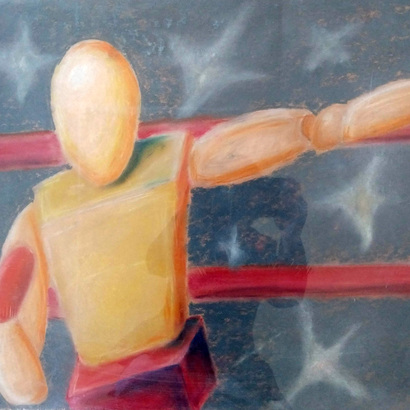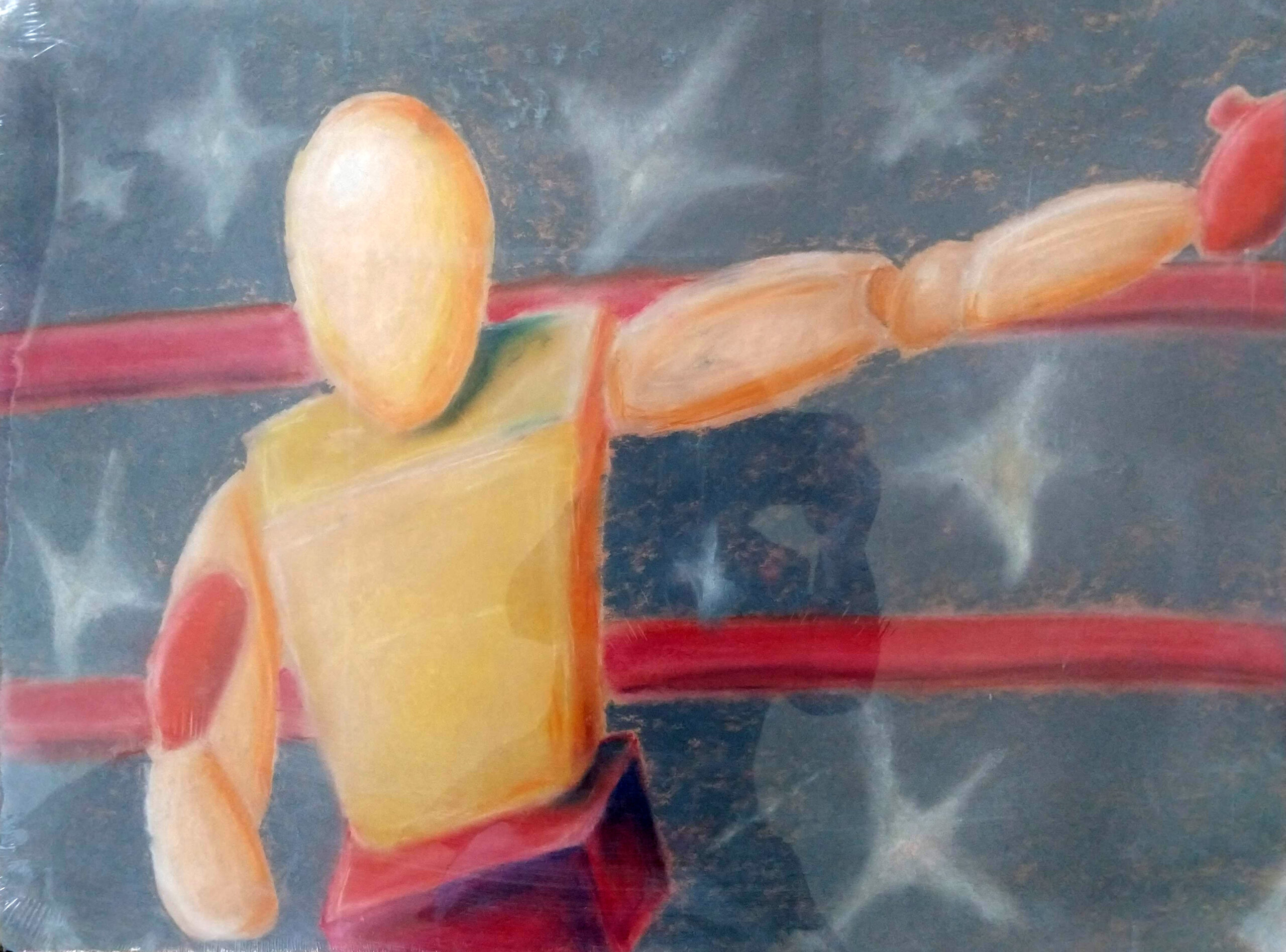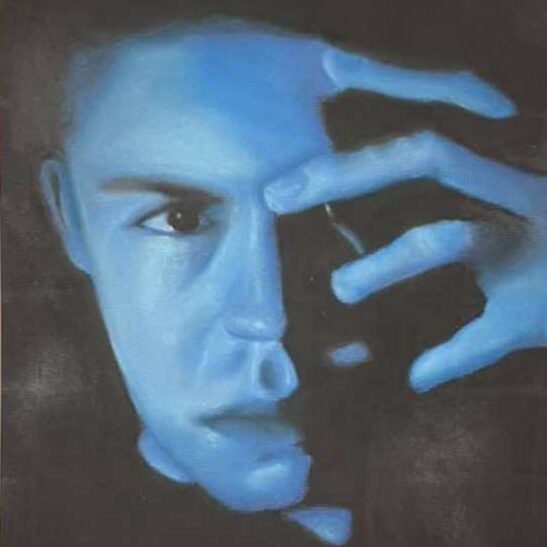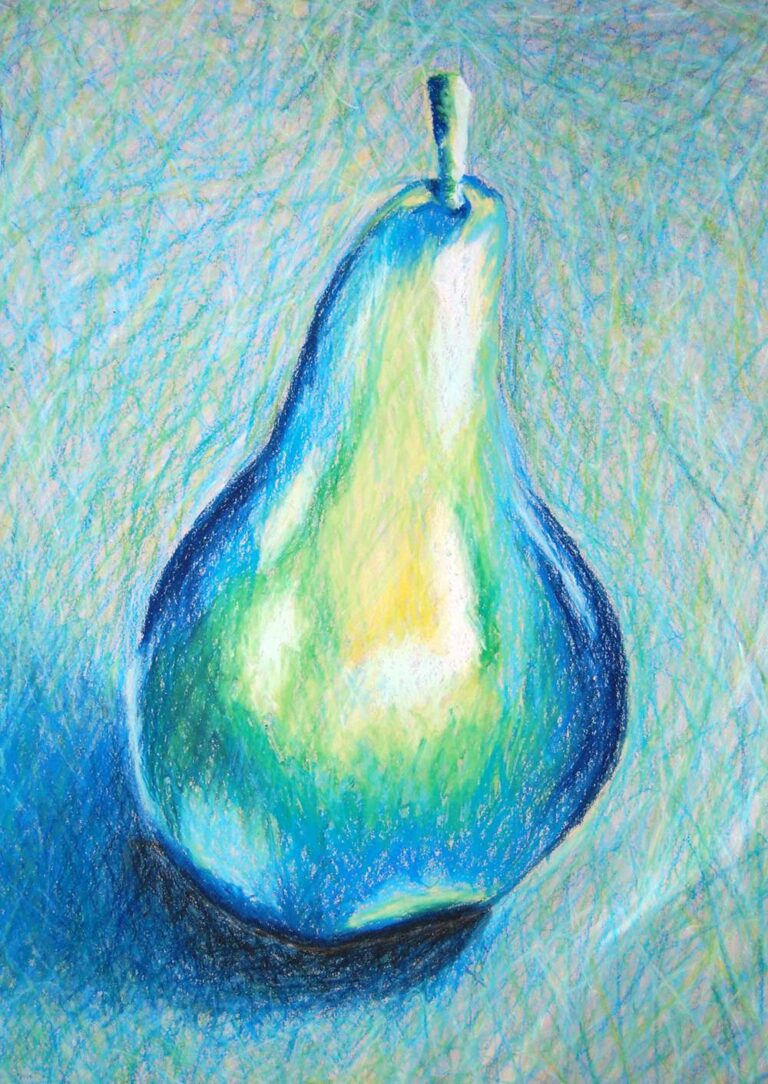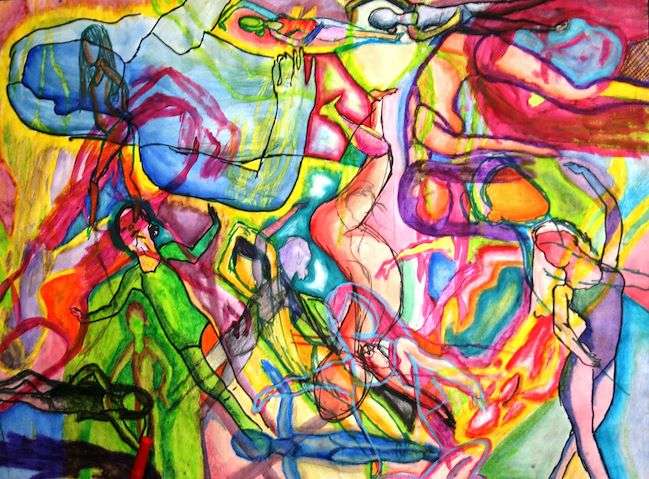Grade Level
7-8, 9-10Duration
10 periods, 45 minutes in length
Materials
Toned paper with some tooth, white pastel sets, white charcoal pencils, wood figure manikins for drawing and/or basic forms
Media
Chalk pastels
Lesson Objectives
For the student to…
• understand how to shade to create form.
• understand that all objects can be simplified to the basic form.
• express the human figure in action with correct proportions.
Introductory Activity
Students do preliminary work in drawing basic forms in class. Students take notes on shape and form. In the visual arts, the shape is a flat, enclosed area of an artwork created through lines, textures, color, etc. Form connotes a three-dimensional object in space. For example, a square is a shape and a cube is a form. We spend time looking at art identifying shapes and forms in the artwork as well as practicing drawing forms from observation in the classroom. We also spend time relating basic forms to objects. An apple is similar to a sphere. An ice cream cone is an upside-down cone with a sphere on top.
The project is leading to a pastel project so introducing creating a form with color and how to both lighten and darken a color is also an exercise I spend time on. I demonstrate a little color theory, how to lighten a color, and how to darken a color. I have students use the darkest colors of the color in the pastel set as well as related dark colors and often a compliment rather than relying on black which I discourage using in all but minute quantities, if at all.
We also talk about the human form in this context as well. At this point, you can also introduce the proportions of the human body. If you have wood figure manikins have your students spend some class time practicing drawing the models. For homework, ask students to find some action photos of people from the internet or magazines.
Lesson Process
Students identify a picture of a human in action they will use for the project and crop the image so the figure takes up the view, which also needs to be in proportion to the paper. Students practice drawing their figures in simple forms that express the action in their sketchbooks. When they feel ready, students lightly sketch on colored paper. If the paper is dark, students can use a white charcoal pencil. The paper should be appropriate for chalk pastels. Have students identify a light source and develop the forms with the chalk pastel with all the knowledge garnished in the introductory activities. I also work with students on not blowing the excess pastel. Pastels can be messy! Students should keep the backgrounds simple but should block in color rather than leave it with no media.
After students have completed, you may want to spray lightly with fixative outside.
Vocabulary
highlight, cast shadow, shape, proportion, shadow, formResources
Proportions of the human figure
Breaking the human body into basic forms
Rendering form Video

